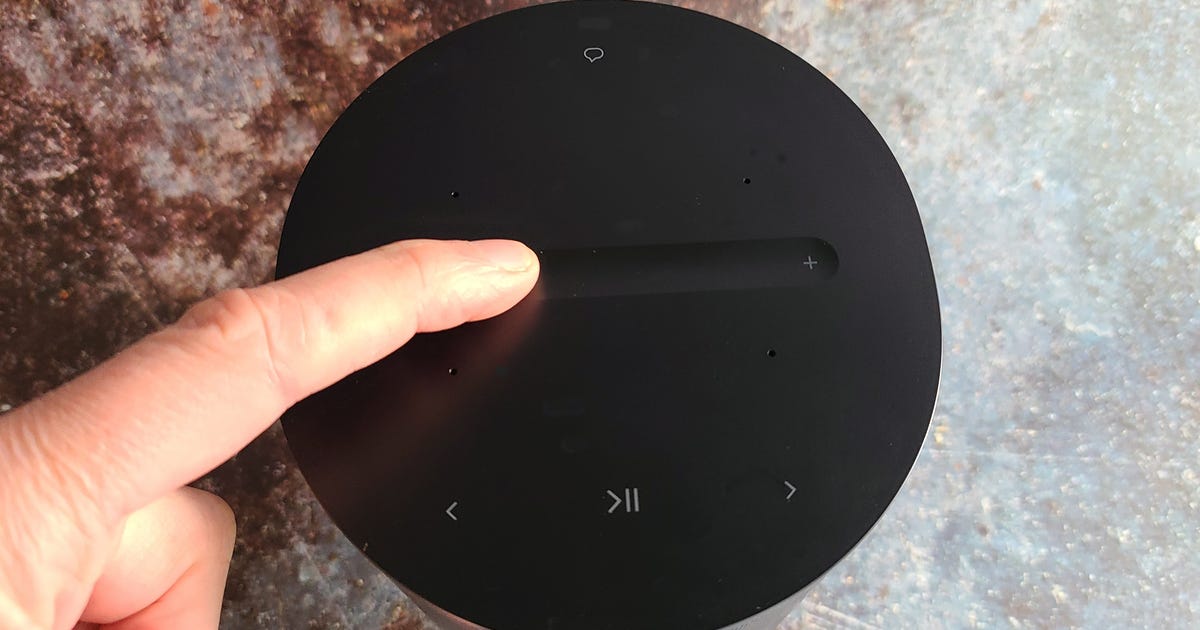The Yamaha A-S801 recalls the look of a traditional integrated amplifier from the 1970s or 1980s. I love its clean lines, minimal controls, and the build quality of this 100-watt-per-channel amp is at least on par with the best specimens from the glory days. Nice, but it also sports features the classics lacked, like a built-in digital converter, and a remote control!

Yamaha A-S801 amp and remote
Yamaha
Like most integrated amps, the A-S801 is so dead simple to use you’ll probably never have to crack open the owner’s manual to figure out how to play your music. In 2015 that’s hardly a given with AV receivers. One feature I’ve always admired on Yamaha amps is the A-S801’s variable loudness control, it’s great for folks who occasionally listen at hushed, late-night volume, because this single control lets you add just the right amount of bass and treble that would otherwise be lost with quiet listening.
You also get bass and treble control knobs you can fiddle with to your heart’s content, and fine-tune the tonal balance of your speakers or headphones. Connectivity runs to five analog inputs and two “tape” outputs, plus a moving-magnet phono input. Digital inputs are USB, coaxial and optical, and there’s an RCA subwoofer output jack, along with two pairs of heavy-duty speaker cable binding posts. My review sample was finished in black, but it’s also available in silver, and I think Yamaha amps have always looked best in silver.
The chassis measures 17.1 by 6 by 15.25 inches, and it weighs 26.7 pounds — build quality feels especially solid. The slender remote handles most functions, but not bass, treble or variable loudness.
To get acquainted with the amp’s sound I watched “Seymour: An Introduction,” Ethan Hawke’s documentary film about a brilliant piano teacher, Seymour Bernstein. Watching Bernstein with his students delving into the minutia of piano technique, the Blu-ray’s sound over Hifiman Edition X headphones was so open and big I had to stop and make sure the sound wasn’t coming over the speakers — it was that good. That sort of out-of-head sound from headphones is rare, but the Edition X’s sound, paired with the A-S801 was sublime.
My KEF LS50 speakers turned out to be a good match with the amp when I played Bruce Springsteen’s recently remastered “Darkness on the Edge of Town” CD. The bass from these little speakers went down to the floor, and I loved the way the Boss’ rhythm section locked in. The band was tight, and Springsteen’s vocals really connected with me.


Yamaha A-S801’s heavy-duty speaker cable connectors
Steve Guttenberg/CNET
I next compared the A-S801’s built-in digital converter with the Arcam irDAC converter, and while I heard differences, they weren’t huge. The irDAC sounded more expansive and richer, but it costs nearly as much as the A-S801. Still, it’s worth noting the A-S801’s USB input supports DSD (2.8MHz and 5.6MHz) and PCM (384kHz/32-bit) formats.
The A-S801 managed to generate surprisingly deep and punchy bass with Aphex Twin’s “Computer Controlled Acoustic Instruments” album, the little LS50s really strutted their stuff with this amp. The clarity and precision of the sound of each percussion instrument stood out in bold relief. After switching over to the NAD C-316BEE integrated amp ($380), the soundstage dimensions shrank and dynamics flattened because the C 316BEE significantly diminished the LS50s’ capabilities. With Fleet Foxes “Sun Giant” album, the lush harmonies and acoustic instruments had a more organic, full-bodied tonality with the A-S801; the C-316BEE sounded rather anemic and flat by comparison.
Still, the C 316BEE is a lot less than half the price of the A-S801. For the money I still recommend the C 316BEE, but if you can afford to step up, the A-S801 is a clear winner.
Encouraged by what I heard with the LS50s, I was eager to try the A-S801 with my Magnepan .7 speakers, which are harder to drive than the LS50s, and notoriously finicky about amps. The A-S801 faced the challenge head on, and sounded even better over the .7 panel speakers than it did with the LS50s.
Sticking with the .7 speakers, I next compared the A-S801 with the Schiit Ragnarok integrated amp ($1,699). That one added more oomph to the sound; the A-S801 sounded a bit lightweight after spending time with the Ragnarok. It’s a better sounding amp in every way, but lacks a lot of the A-S801’s features, such as a built-in digital converter and a remote.
The Yamaha A-S801 sells for $899.95 in the US.





